How to install a toilet with an oblique outlet: detailed technical instructions
Toilets with an oblique outlet have been market leaders for several years.Their popularity can be explained simply: it is this connection to the sewer system that is most convenient, because... elements do not need to be adjusted during installation.
These models are perfect for both apartments in high-rise buildings and private houses. And, if desired, you can handle the installation yourself. In our article we will look at how to install a toilet with an oblique outlet without outside help. We will provide step-by-step instructions, describing each step in detail. All actions are accompanied by visual photos and recommendations from specialists.
The content of the article:
Features of models with oblique release
The oblique toilet outlet is inclined relative to the floor. This makes it easy to connect the plumbing fixture to the sewer system even in cases where there is no fixed connection point, which is impossible when installing models with horizontal or toilets with vertical outlet.
Most multi-storey and private houses are built according to standard designs. Their communication schemes are very similar, and the arrangement of the elements of the sewer systems is thought out in such a way that when installing toilets with an oblique outlet, problems are least likely to occur. Installation is simple, takes minimal time, and can be performed by anyone who knows how to use tools.
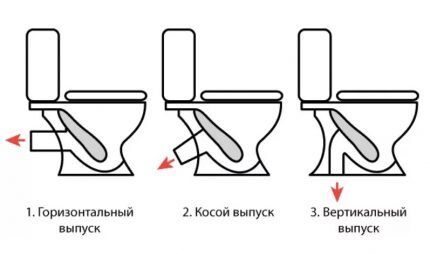
Models with oblique release are very convenient to use. When installing them, not one elbow is installed at an angle of 90°, but two, each of which has a rotation angle of 45°.
Thanks to this design, sewage from the toilet easily enters the sewer system and does not accumulate. If the device is installed correctly, blockages rarely occur and are easier to deal with.
Detailed installation instructions
Usually, before installing a toilet, you have to remove the old plumbing, unless the work is being carried out in a new building. Removal may require a set of screwdrivers, a small crowbar, a metal saw, a hammer or a sledgehammer.
To install a new plumbing fixture, the following tools and materials will be useful:
- hammer drill or drill with pobedit drills;
- measuring instruments;
- marker or pencil for marking;
- sets of wrenches – adjustable and wrenches;
- a piece of sandpaper;
- a special sealing compound for plumbing work and a soft silicone spatula for smoothing seams;
- cement;
- resin strand, tow, flax or other sealant;
- rags, floor cloths or absorbent wipes for wiping off water and drying surfaces.
To connect the toilet flush to the sewer system, various elements are used - pipes, corrugation or cuffs with eccentrics. You need to decide in advance on the mounting method and purchase the necessary parts.
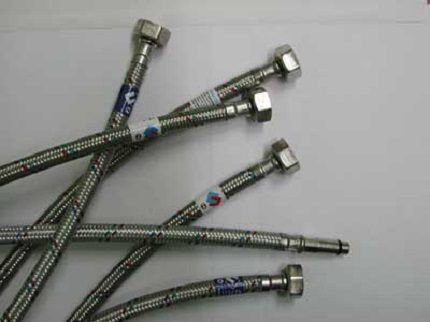
As for fasteners (bolts, plugs and spacers for them, screws, dowels, etc.), manufacturers usually complete their products with them themselves. However, it happens that toilets are sold “as is” - without the necessary elements. Then you have to buy them separately.
It is advisable to do this immediately and in the same store where you purchase plumbing fixtures. Make sure all parts are the correct size and diameter.
Stage 1 - dismantling old plumbing
Before starting dismantling, it is advisable to wash the old toilet with an antiseptic. Chlorine-containing household chemicals, for example, “Belizna” or “Toilet Duckling,” are perfect for this.
When working, be sure to use gloves. This will help avoid accidental scratches, abrasions and subsequent infection.
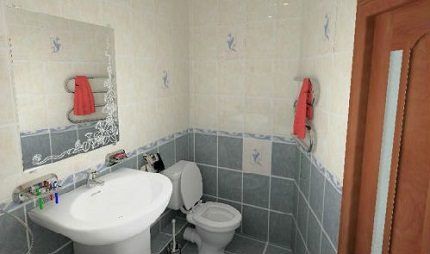
During the period of work, it is worth abandoning the operation of the sewer system. If the toilet is being replaced in an apartment in a multi-storey building, it is advisable that the neighbors do not flush anything in the toilet either. First of all, you should turn off the water, drain the tank, and disconnect the underwater hose.
It is better to immediately remove the tank, otherwise it will be difficult to dismantle the entire structure along with it. To do this, you need to unscrew the nuts that hold the lid and connections to the bowl. If the cistern model is wall-mounted, then it is not necessary to disassemble it, just unfasten it from the base of the toilet.
Features of dismantling old plumbing depend on its method of fastening. Toilet bowls are installed on taffeta (thick oak board), mounted on adhesive mastic or standard fasteners.

If you have to dismantle a model mounted on taffeta, you need to unscrew the screws to free the base. It often happens that the toilet outlet is sealed with cement mortar. It must be carefully knocked out with a hammer, chisel or chisel. You can solve the issue radically: with a sharp blow under the bowl, make the pipe break, and then dismantle the structure in parts.
The toilet can be installed on thick rubber glued to the floor. In this case, a strong sharp blow from the palm of your hand on the base of the toilet from the front is enough to loosen it. Then all that remains is to get the issue.
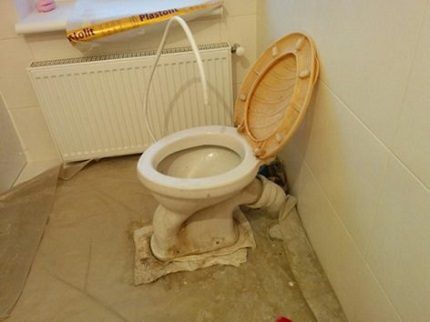
The only correct way to fix the toilet is with screws. This design is easy to dismantle. It is enough to remove the decorative plugs that mask the fasteners and unscrew the screws themselves.
The outlet must be carefully removed from the socket of the sewer pipe. The toilet can be removed easily and without damage.
We have another article on our website with step-by-step instructions on dismantling an old toilet. We recommend that you familiarize yourself with it.
Stage 2 - preparing the base
The surface on which the toilet is installed must be perfectly flat, because... Uneven loads on the structure can lead to cracks. If there are differences, the base is leveled with cement mortar. Then you have to postpone installing the new toilet until the solution is completely dry.
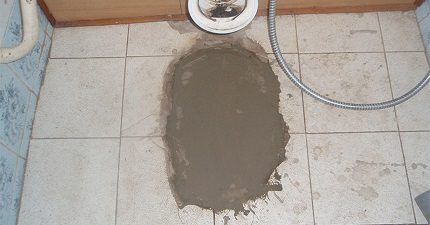
When all the preparatory work is completed, you can begin installing new plumbing.
Stage 3 - connection to the sewer
The toilet needs to be assembled and “tried on” to the place of future installation. It is placed exactly as it will be located, and the bolt attachment points are marked. If the device will be connected using a fan pipe, you should immediately decide on the scale of the adjustment.
There are three main ways to connect to the sewer:
- directly into the socket of the sewer pipeline;
- using an eccentric cuff;
- using a corrugated outlet.
Installation in a pipe socket is an ideal option that can be used if the new device clearly fits in the place of the old one. As a rule, this happens either with extremely accurate calculations, or when replacing the toilet with the same new model.
To seal the connection of the elements, a special sealing collar is used. Moreover, when purchasing it, you should definitely take into account the material of the sewer pipeline - plastic or cast iron. This determines which specific type of cuff is suitable.
Connecting to the sewer takes just a few minutes. You need to install a seal in the socket, and then push the toilet outlet pipe into it. If additional sealing is needed, the joints can be treated with plumbing sealant.
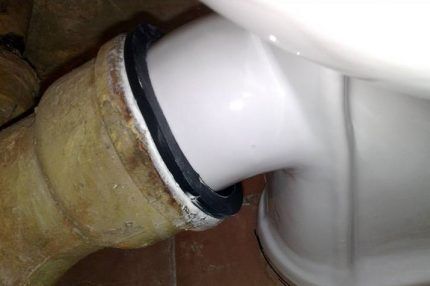
The oblique outlet can be connected to the sewer system using an eccentric collar. The axes of the cylinders of such a cuff can be located with an offset of up to 5 cm relative to each other (i.e., the toilet can be installed no more than 5 cm to the left or to the right of the center of the sewer socket).
Before connecting the eccentric cuff to the sewer pipe, it is necessary to thoroughly clean the socket of dirt, degrease and dry it so that moisture does not interfere with the sealing of the joints.
After preparation, waterproof silicone sealant is applied to the cuff and connected to the toilet outlet. When the sealing compound is completely dry, the socket of the sewer pipe is treated in the same way and the other end of the cuff is connected to it.
After connecting to the sewer, it is advisable not to use the toilet for at least a couple of hours until the final polymerization of the sealant (the exact time is indicated on the packaging of the composition).
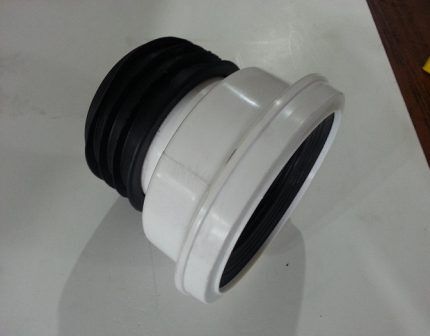
There are cases when the eccentric cuff turns out to be useless, because deviations between the toilet outlet and the socket of the sewer pipe are more than 5 cm. Then the only way to install plumbing without redoing an entire section of the sewer system is to use a corrugated outlet.
The main advantage of corrugation for a toilet bowl is that it is used for any deviations, and the toilet bowl can be placed at any angle in relation to the sewer pipe. If major changes are planned and it is necessary to rotate the plumbing fixture 90°, this is also possible. Using corrugation, it is easy to replace a toilet with a vertical type of outlet with a model with an oblique one.
To install a corrugated outlet, a strip of sealant is applied to the toilet outlet and the part of the corrugation where the membrane is located is pulled over it. The edge of the outlet pipe should be closed by 5-6 cm, and the part should be put on smoothly, without distortions. Before connecting the outlet to the sewer, you should wait until the sealant polymerizes.
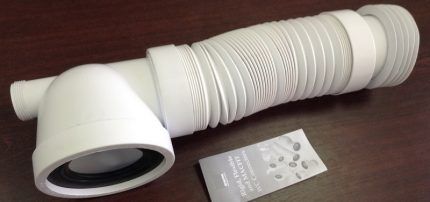
When the corrugation is firmly glued to the outlet, it is carefully inserted into the cleaned sewer socket with the part on which the outer seal is located. To make the joints more secure, you can treat them with silicone sealant, but this is not necessary.
There are also other articles on our website that thoroughly examine various toilet connection diagrams and provide installation instructions using various adapters. We advise you to familiarize yourself with them to choose the most suitable option for yourself:
- Installing corrugation on a toilet and the specifics of connecting plumbing with it
- Rubber cuff for toilet (eccentric): installation and connection rules
- How to connect a toilet to a sewer system: a review of installation technologies for all types of toilets
Stage 4 - fixing the device to the floor
The toilet is secured to the floor in several ways:
- anchors or dowels;
- screws on taffeta;
- for epoxy adhesive composition.
If the toilet is installed after pouring the screed, you can use anchors or taffeta. If the fastening is anchored, then the fasteners are installed so that the part remains above the floor (up to 5-6 cm). If necessary, you can always cut them down, but if there is not enough anchor to attach the nut, there will be much more difficulties.
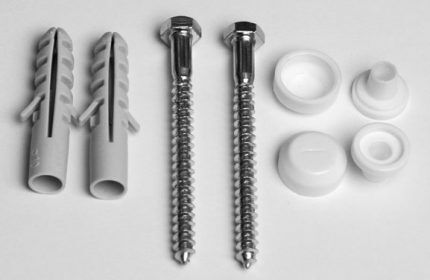
For taffeta, take a strong two-inch wooden board, preferably oak. Its dimensions must correspond to the toilet leg. Nails are driven across the entire surface of the board so that they go right through and the tips stick out slightly on the other side.
The taffeta is installed in the concrete screed with the nail heads facing up. The board is filled with solution so that it covers its sides to the top edge. When the concrete has dried, the toilet can be installed on the taffeta and secured to it with screws.
Instead of a wooden board, you can install thick, dense rubber.Such a gasket can be made from an old rubber mat.
On our website there is a detailed analysis of methods for attaching a toilet and detailed instructions with visual illustrations of each stage of work. To get acquainted with them, please go to via this link.
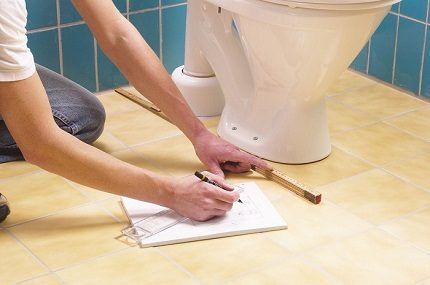
If ceramic tiles are laid on the floor, the toilet can be “set” on epoxy resin. It perfectly glues a variety of materials and is durable. Fastening is simple, but takes a lot of time, because... The epoxy dries and hardens for at least 12-15 hours.
Before gluing the toilet base, you need to prepare the surfaces - thoroughly clean, remove dust, degrease with a solvent, and dry. The tiles are sanded with sandpaper to make them rougher.

If you want to prepare the resin, it is important to monitor the temperature so that it does not rise above 50 C. If the epoxy resin is prepared correctly, it looks plastic, homogeneous and is suitable for use within the next 1-1.5 hours.
Epoxy resin is applied to the toilet leg in a layer of 4 mm and the device is installed in place, pressing it tightly to the floor. Within 12 hours it cannot be moved, used or continued with any work, because this may affect the strength of the fastening.
For more detailed instructions on installing a toilet on tiles, we reviewed here.
Stage 5 - connecting to the water supply
Water can enter the cistern from below or from the side. Bottom connection is considered more practical, but requires attention when connecting the hose. It is easier to connect the side supply, but such a tank may make noise during operation. This is a solvable problem. If you use a longer hose, the noise when drawing water will be minimal.
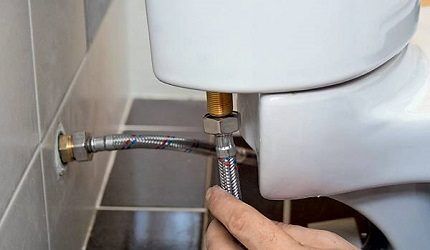
You can connect the tank to the water supply using a flexible or rigid inlet hose. The second option is usually used if the structure is mounted in a wall, and access for technical inspections and repairs is difficult. In other cases, it is better to choose a flexible connection hose.
Work order:
- A separate tap is mounted on the water pipe so that, if necessary, the water supply to the tank can be turned off.
- A flexible hose is connected to the embedded tap and carefully tightened using a locking nut.
- The second end of the liner is attached to the drain tank in the same way.
- All that remains is to make sure that the connection is tight. To do this, open the tap and observe whether the joint leaks when water is drawn into the tank.
- If the connections allow water to pass through, they are sealed with foam or treated with plumbing sealant.
Sometimes the problem of water leakage occurs due to a defective hose.
If no sealing methods help eliminate the leak, you will have to replace the liner with a new one.
Conclusions and useful video on the topic
Models of toilets with an oblique outlet can differ greatly from each other, but the procedure for installation is always the same.We offer several video instructions that can be useful and answer questions that arise in the process of selecting and installing a device.
Recommendations for choosing the right toilet. What nuances should be taken into account in order not to make a mistake and buy the right model:
Detailed instructions for installing the device with detailed explanations:
Tips on how to independently install a supply hose to connect the drain tank to the water supply:
You don't have to be a qualified plumber to install a flush toilet yourself. This is not a difficult task. The main thing is to responsibly approach the choice of model and components, think over a suitable method of connecting to the sewer and attaching to the floor, and carefully carry out all the work.
If you doubt your abilities, it is better to seek help from specialists.
Are you installing a toilet at home and will you be connecting it to the utilities yourself? Maybe you have some questions? Ask them to our expert in the comments block.
Or have you already completed your toilet installation? What stage of work was the most difficult for you? Share your advice, add a photo of the finished work - many beginners who doubt their abilities will be grateful to you.




A really very convenient thing is a toilet with an oblique outlet. When I went to the store to buy a new toilet, I estimated the location of the pipes and dimensions by eye. There was no time to measure, and I was too lazy to look for a tape measure. Therefore, I had to buy a corrugation and an eccentric cuff in the store, just in case. I took it because I really didn’t want to install the corrugation due to the significant distance of the toilet from the wall.Arriving home, it turned out that none of this was needed, the toilet fit perfectly. It is thanks to the oblique release. The only thing I used was silicone sealant to seal the connection to the drain.
My grandmother inherited an apartment, an ordinary old Khrushchev apartment. While she was alive, she did not allow repairs to be made. You yourself know how difficult it is to persuade a person. When we were renovating the bathroom (it shares a toilet), I decided to install a toilet with an oblique outlet. When dismantling the old toilet, the already uneven floor was damaged. Therefore, it is very important to eliminate all defects before installing a new one, otherwise it will “walk” on the floor.
The biggest problem I had was leveling the floor and fitting the slanted outlet under the drain pipe. The old one was embedded in a concrete base, so when it was dismantled, a hard drop remained. I had to knock off the excess, then level it, and only then install a new one. As for the oblique outlet, I managed to fit it to the drain, but it cost me a lot of effort.